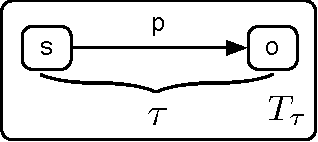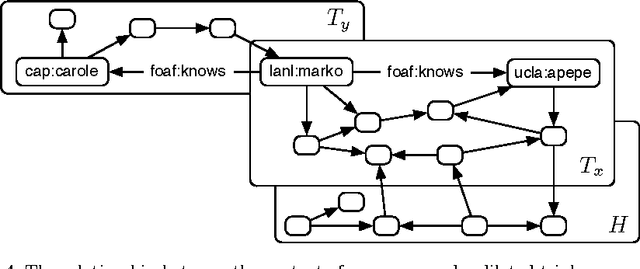Joshua Shinavier
Optimizing real-time RDF data streams
Nov 16, 2010



Abstract:The Resource Description Framework (RDF) provides a common data model for the integration of "real-time" social and sensor data streams with the Web and with each other. While there exist numerous protocols and data formats for exchanging dynamic RDF data, or RDF updates, these options should be examined carefully in order to enable a Semantic Web equivalent of the high-throughput, low-latency streams of typical Web 2.0, multimedia, and gaming applications. This paper contains a brief survey of RDF update formats and a high-level discussion of both TCP and UDP-based transport protocols for updates. Its main contribution is the experimental evaluation of a UDP-based architecture which serves as a real-world example of a high-performance RDF streaming application in an Internet-scale distributed environment.
The Dilated Triple
Jun 06, 2010



Abstract:The basic unit of meaning on the Semantic Web is the RDF statement, or triple, which combines a distinct subject, predicate and object to make a definite assertion about the world. A set of triples constitutes a graph, to which they give a collective meaning. It is upon this simple foundation that the rich, complex knowledge structures of the Semantic Web are built. Yet the very expressiveness of RDF, by inviting comparison with real-world knowledge, highlights a fundamental shortcoming, in that RDF is limited to statements of absolute fact, independent of the context in which a statement is asserted. This is in stark contrast with the thoroughly context-sensitive nature of human thought. The model presented here provides a particularly simple means of contextualizing an RDF triple by associating it with related statements in the same graph. This approach, in combination with a notion of graph similarity, is sufficient to select only those statements from an RDF graph which are subjectively most relevant to the context of the requesting process.
 Add to Chrome
Add to Chrome Add to Firefox
Add to Firefox Add to Edge
Add to Edge